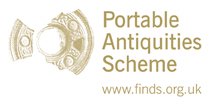Server check!
You are on the training database
Gouges
Socketed Gouges
Socketed gouges were found from the Wilburton metalwork phase, but were much more prevalent in the Ewart Park phase, prompting Brendan O'Connor to associate all stray finds from the continent with the latter phase (1980: 175). Earlier gouges in Britain had multiple mouth mouldings, whilst similarly dated ones from France had plain collars, with little typological change. Eogan (1966b) managed to place the origins of the socketed gouge in Transylvania, noted by two hoards (Augustin and later Uioara de Sus).
Example = CAM-A203C1, IOW-8BC6B6
Date = 1020-800 BC
Distribution = Britain but especially southern Britain
Comment = Gouges are socketed and usually have a flat top and circular mouths. They would have been used in woodworking. There is very little variation in typology meaning that they can be difficult to date accurately.
Date = 1020-800 BC
Distribution = Britain but especially southern Britain
Comment = Gouges are socketed and usually have a flat top and circular mouths. They would have been used in woodworking. There is very little variation in typology meaning that they can be difficult to date accurately.
Tanged Gouge
Tanged gouges are much rarer than their socketed counterparts, with only a handful appearing in Europe. The notable finds came from Saint-Pierre-en-Chastre (France) and the Carleton Rode hoard, Norfolk (England).
References
-
O'Connor, B. (1980) 'Cross-Channel relations in the later Bronze Age: relations between Britain, NE France and the Low Countries during the Later Bronze Age and the Early Iron Age, with particular reference to the metalwork' BAR International Series British Archaeological Reports Oxford S91(i-ii).
-
Rowlands, M.J. (1976) 'The Production and Distribution of Metalwork in the Middle Bronze Age in Southern Britain: Part ii'. Oxford: British Archaeological Reports.


